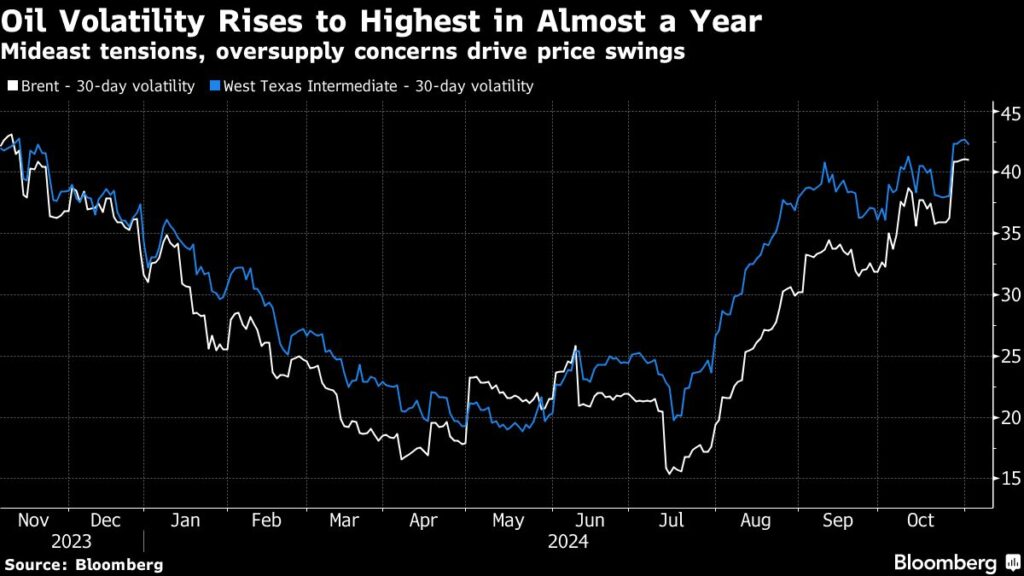Oil prices have seen an uptick following OPEC+’s recent decision to delay its planned production increase originally scheduled for December. The producer group has opted to maintain a restraint on supply until the end of the year rather than returning 180,000 barrels a day next month. This strategic move comes amidst rising tensions in the Middle East, which have further impacted market dynamics. As a result, Brent crude prices rose over 2%, surpassing $74 a barrel, while West Texas Intermediate prices approached $71. The ongoing geopolitical issues are not just limited to market fluctuations; they carry broader implications for global oil supply and security.
The geopolitical landscape has intensified due to escalating rhetoric from Iran, particularly following a speech by Supreme Leader Ayatollah Ali Khamenei, who warned of a “crushing response” towards Israel. Reports indicate Tehran is planning a military response following the U.S. presidential election, signaling a potentially dangerous period leading up to the inauguration in January. This aggressive stance raises concerns not only about direct military interactions but also about their potential impact on global oil supplies and energy prices. Analysts from RBC Capital Markets have noted that fears of oversupply in a fragile market have made investors wary, further complicating the outlook for oil prices.
Market volatility is heightened by the precarious balance between supply and demand. On one hand, concerns linger regarding a potential oversupply in 2024, coupled with weak demand from China, one of the world’s largest oil importers. On the other hand, the persistent unrest in the Middle East, a region that represents about a third of the global crude supply, keeps traders on edge. The recent Israeli air strikes on Iranian targets that spared energy infrastructure contributed to an initial decline in oil futures, but the market later stabilized as traders reassessed the situation, suggesting that fears of a steep downturn may have been overstated.
Looking ahead, the oil market is facing several critical events that may influence prices and overall market sentiment. The U.S. presidential election is a focal point, as its outcomes can have direct repercussions on energy policy and international relations. Additionally, China’s top legislative body is set to meet, making it an important moment for economic policy announcements that could either stoke or quell global demand for oil. These events will likely inform traders’ strategies as they navigate a complex web of geopolitical and economic factors.
In anticipation of these developments, Saudi Aramco is expected to announce its official oil prices for December. Analysts are forecasting a likely reduction in rates for Asian buyers, suggesting a cautious approach amid the uncertain market climate. The decision by Saudi Arabia’s national oil company often sets the tone for the pricing framework in the region, thereby influencing traders’ actions and sentiment. This price-setting could reflect a broader trend of moderated growth in oil consumption due to economic challenges and fluctuating geopolitical risks.
Overall, the current state of the oil market is marked by a dichotomy between geopolitical tensions and fundamental supply/demand factors. The cooperative action by OPEC+ to postpone production increases underscores a strategy aimed at supporting prices amid uncertainties. However, the looming threats from the Middle East conflict and concerns of oversupply, particularly with potential shifts in demand from China, create a climate of volatility. As traders prepare for significant upcoming events, including the U.S. election and key policy discussions in China, the direction of oil prices remains precarious, balancing between immediate geopolitical risks and longer-term market fundamentals.

